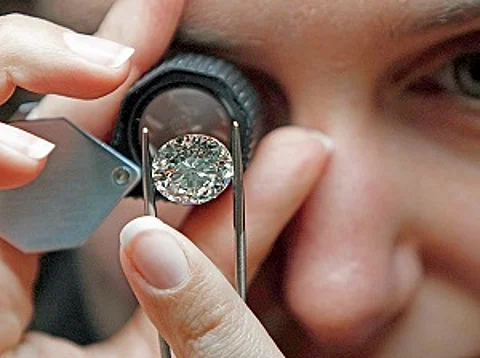

Technology has permeated through every aspect of the jewellery business, so it’s no surprise then that the diamond industry too has become rather dependant on this technology. With the sudden increase in the volumes of synthetic diamonds, specialized machines that can accurately identify a natural diamond is the need of the hour. Not only does it give a stamp of authenticity, it also increases the confidence of the consumer towards brands selling diamonds or jewellery. Various diamond grading labs and testing companies have introduced a number of diamond testing machines that have interesting features and are available for purchase by diamond graders.
Important factors
to consider before
purchase
Some of the important aspects to
consider before purchasing a verification
instrument is types of diamonds
used i.e. size, colour, shape, and loose/
mounted as those influence the choice
of instrument. Large volumes of melee
will require different levels of automation
than small number of larger
stones, so the volume of goods plays a
key role. Some instruments require no
experience at all whereas other devices
require trained operators. So if you are
considering purchasing an advanced
instrument, you need to make sure that
you have a skilled operator who can use
it. Depending on your requirement, you
must decide if you require a portable
instrument if you operate in various locations
or test stones outside your own
premises. As with any purchase, budget
plays a key role in the final decision.
Diamond Verification Instruments
vary greatly in cost, due to several factors
and so it’s important to keep cost
in mind.
Understanding the indispensable nature for diamond verification systems, Diamond Producer’s Association (DPA) has launched The ASSURE Program which has developed a universal standard to test the performance of Diamond Verification Instruments in a consistent manner. “The program delivers ongoing testing of Diamond Verification Instruments to ensure the trade is fully informed of the relative performance of the Diamond Verification Instruments in the market. The instruments are rigorously tested in a transparent manner against a unique common sample and standard. The ASSURE sample will also evolve to include new synthetic diamonds as they are identified. The instruments submitted to ASSURE have been tested in accordance with the methods and protocols in the Diamond Verification Instruments Standard,” says Richa Singh, Managing Director - India, Diamond Producers Association.
Pushing Boundaries
The Gemological Institute of India
(GIA) is the authority in diamond certification and grading. GIA is investing
heavily in research and instrument
development to understand these
new materials that enter in the supply
chain, and is in a unique position to
develop instruments and services capable
of distinguishing natural diamonds
from potentially laboratory-grown and
treated diamonds. The GIA iD100®
gem testing device is a result of these
long-standing research efforts. It is
a sophisticated and easy-to-operate
desktop instrument that combines advanced
spectroscopic technology with
GIA’s 60 years of diamond and gemstone
identification research to distinguish
natural diamonds from laboratory-
grown (HPHT and CVD) diamonds
and diamond simulants. Nirupa Bhatt,
Managing Director, GIA, India and
Middle East shares, “Rapid advances
in the technology for laboratory-grown
diamonds and treatments make it crucial
that the gem and jewellery industry
has reliable methods for identifying
them. GIA is committed to continued
improvements, and the device now has
the capabilities to identify blue-togreen
and brown diamonds in addition
to diamonds in the colourless to nearcolourless
range. Additionally, a Pink
Diamond Software Upgrade now gives the instrument the ability to distinguish
natural pink diamonds from laboratorygrown
(HPHT and CVD) pink diamonds
and simulants. These two significant
improvements make proper identification
of laboratory-grown diamonds
more accessible to retailers and manufacturers
around the world by expanding
capabilities of the GIA iD100.

Providing advanced technological tools for the diamond industry since 1990, OGI Systems has its presence across Europe, Asia, USA and South Africa. OGI Systems owner Daniel Benzano says, “Many parcels have mix lab grown stones and so it is imperative that every jewellery factory should have a testing device within its premises. Each device is judged on three factors namely, accuracy, user friendliness and speed. OGI Systems’ Diatrue testing devices can be used for different verticals. For example, Diatrue mobile is suitable for loose diamond testing and small jewellery. Retail stores prefer Diatrue CS as it helps them test both loose diamonds and finished jewellery pieces . For manufacturing factories and pawn shops, Diatrue CXL is a favourite. Indian markets prefer Diatrue A4 as it can test larger jewellery pieces that India is known for.”
“There are various devices available to the trade in the market. One needs to check for the reliability of such devices before using. It’s not only about the price, but also whether the device is meeting the objective of accurately distinguishing between natural diamond, laboratory-grown diamond and simulant material,” concludes Nirupa Bhatt.
Follow DiamondWorld on Instagram: @diamondworldnet
Follow DiamondWorld on Twitter: @diamondworldnet
Follow DiamondWorld on Facebook: @diamondworldnet
